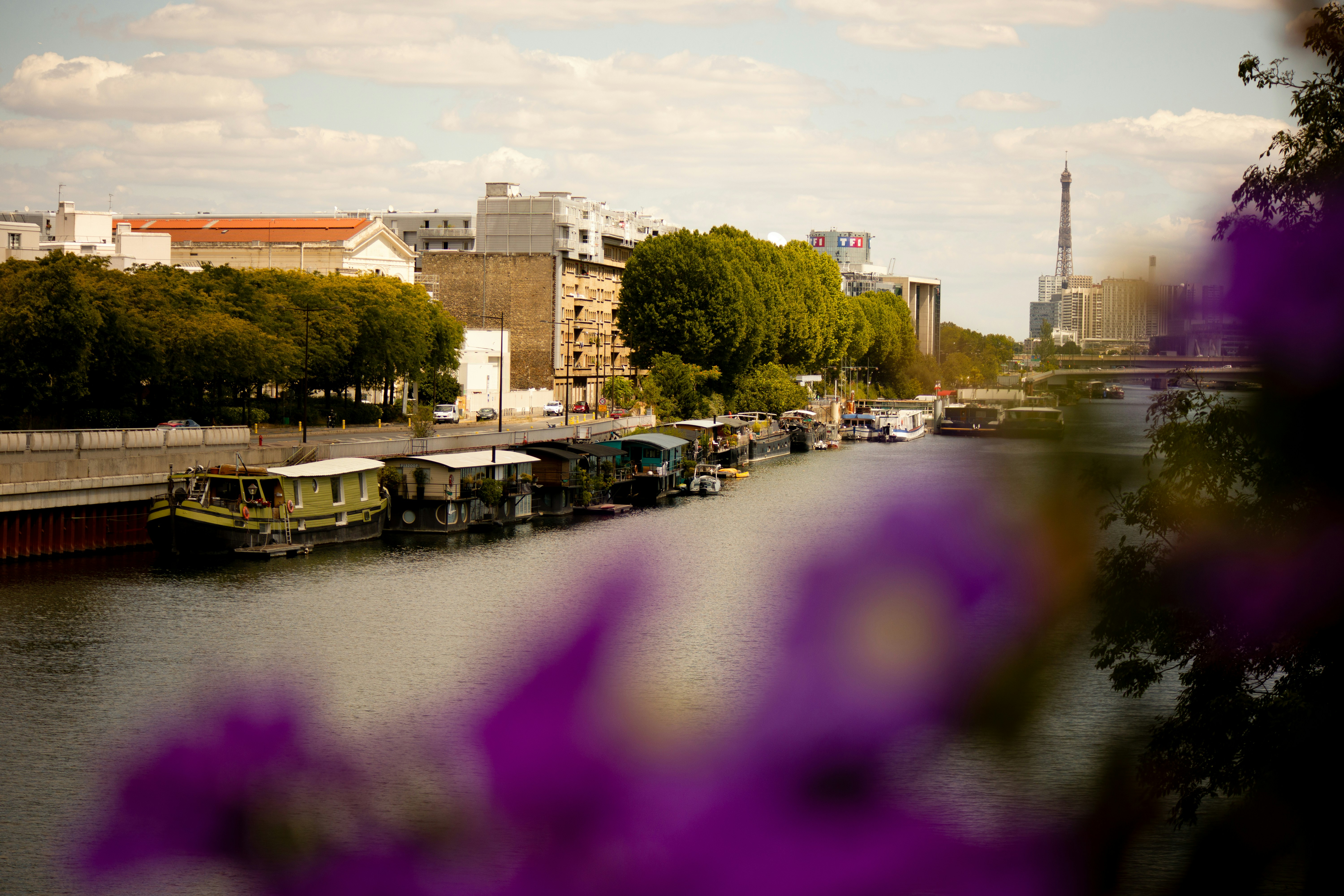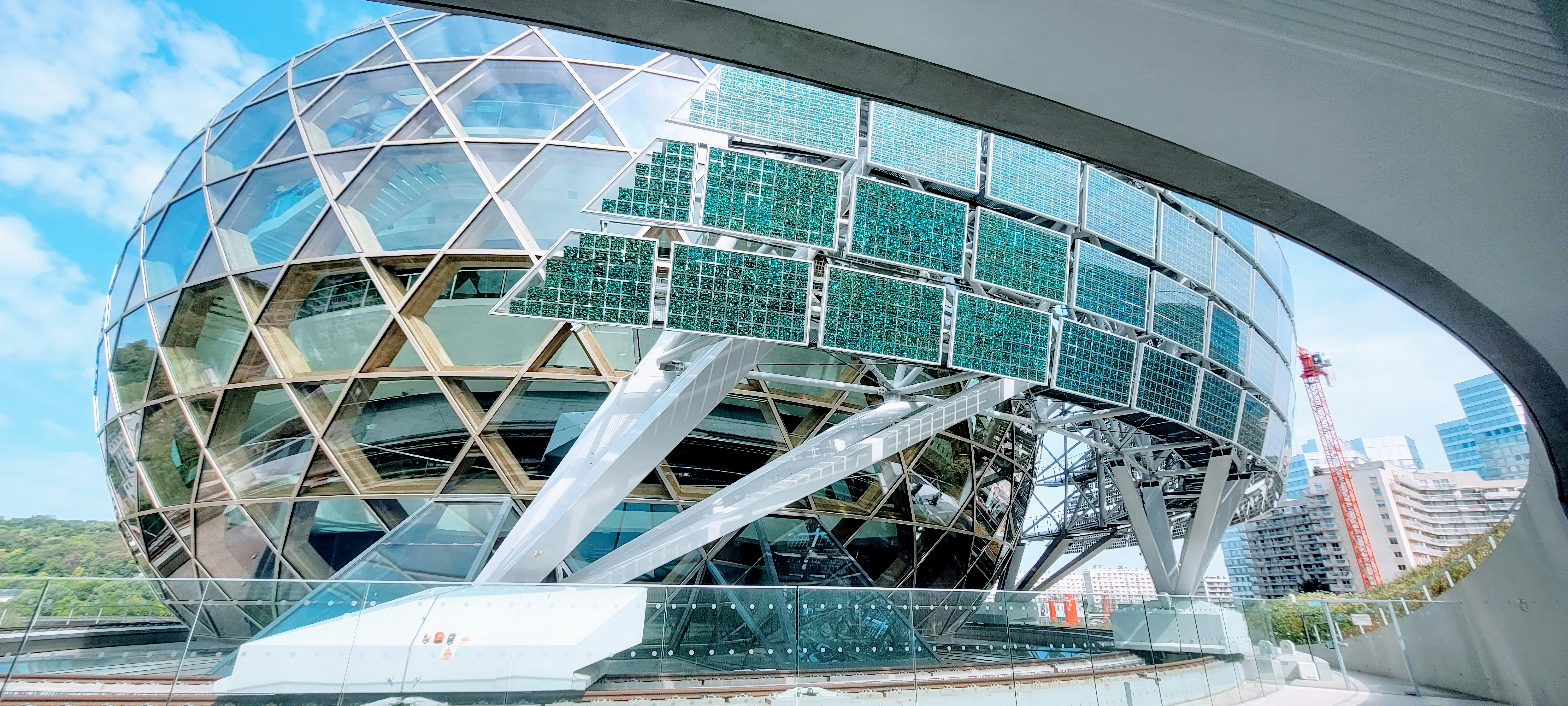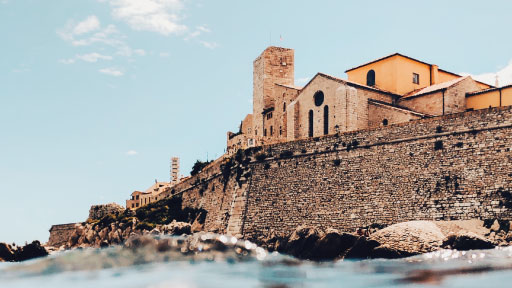Boulogne-Billancourt: A blend of art, industry, and urban renewal
Just beyond the western edge of Paris, a city of contrasts and innovation awaits discovery. Here, the echoes of industrial might mingle with the whispers of artistic genius, and sleek modern architecture stands shoulder to shoulder with remnants of a storied past. This is Boulogne-Billancourt, a place where the legacy of automotive pioneers and avant-garde artists is woven into the fabric of a forward-thinking urban landscape.

As one steps into Boulogne-Billancourt, the city's dual nature is immediately sensed. On one hand, the industrial heritage is palpable, with traces of its automotive past still visible in the urban landscape. On the other, a rich cultural tapestry is unveiled, influenced by the many artists and intellectuals who have called this place home.
A Legacy of Industry and Innovation
The city's identity was profoundly shaped by the automotive industry. In the early 20th century, Boulogne-Billancourt became synonymous with Renault, the French car manufacturer that established its headquarters and factories here. The Île Seguin, an island in the Seine, was transformed into a bustling industrial complex, employing thousands and driving the city's growth.
Today, while the factories have been silenced, their legacy is honored. The former Renault sites are being reimagined as part of ambitious urban renewal projects. The Île Seguin, once the heart of industrial production, is now being reborn as a cultural and technological hub. A new music venue, La Seine Musicale, has already become an iconic landmark, its bold design a testament to the city's commitment to innovation and the arts.
A Haven for Artists and Intellectuals
While industry fueled Boulogne-Billancourt's growth, it was the presence of artists and thinkers that gave the city its unique character. In the early 20th century, the area became a magnet for creative minds seeking inspiration away from the bustle of central Paris.
The Musée Albert-Kahn stands as a testament to this artistic legacy. Created by the banker and philanthropist Albert Kahn, this museum and its gardens offer a journey through time and space. Kahn's vision of promoting cross-cultural understanding through photography and film is preserved here, with the museum housing his vast collection of early color photographs from around the world.
Not far from Kahn's creation, the Musée des Années 30 (Museum of the 1930s) celebrates the artistic and cultural ferment of the interwar years. Here, the works of painters, sculptors, and designers who made Boulogne-Billancourt their home are showcased, offering insight into a pivotal period in French art history.
A City in Transformation
Today, Boulogne-Billancourt is a city in the midst of reinvention. The industrial spaces of yesteryear are being repurposed, giving birth to new neighborhoods that blend residential, commercial, and cultural uses. The Trapèze district, built on former Renault land, exemplifies this transformation. Here, sustainable architecture and green spaces create a modern urban environment that pays homage to the site's industrial past while looking firmly to the future.
The city's commitment to innovation extends beyond urban planning. Boulogne-Billancourt has become a hub for media and technology companies, attracting startups and established firms alike. This influx of creative and tech-savvy professionals is breathing new life into the city, further diversifying its economic base and cultural offerings.
Green Spaces and Leisure
Despite its urban character, Boulogne-Billancourt offers numerous opportunities for relaxation and outdoor activities. The Bois de Boulogne, while technically part of Paris, forms the city's eastern border and provides a vast green lung for residents and visitors alike. Here, one can enjoy boating on lakes, picnicking in meadows, or exploring miles of walking and cycling paths.
Within the city itself, the Parc de Billancourt offers a more modern take on urban green space. This eco-friendly park, built on former industrial land, features innovative landscaping that promotes biodiversity and sustainable water management. It's a favorite spot for families and fitness enthusiasts, embodying the city's commitment to quality of life and environmental stewardship.
A Culinary Scene on the Rise
As Boulogne-Billancourt evolves, so too does its culinary landscape. Traditional bistros and brasseries now share the stage with trendy cafes and international eateries, reflecting the city's diverse population and cosmopolitan outlook. The Marcel Sembat market, held twice a week, remains a focal point for food lovers, offering fresh produce, artisanal cheeses, and local specialties.

In recent years, the city has also seen an influx of young chefs opening innovative restaurants, many of them choosing Boulogne-Billancourt for its more affordable rents compared to central Paris. This has resulted in a dynamic dining scene that continues to surprise and delight both locals and visitors.
As the sun sets over the Seine, casting a golden glow on the city's mix of historic and modern architecture, one can't help but feel the pulse of a place in constant evolution. Boulogne-Billancourt, with its rich past and dynamic present, offers a unique perspective on urban life in the 21st century. It's a city that honors its industrial and artistic heritage while embracing innovation and sustainability, creating a vibrant community that looks confidently to the future. For those seeking to explore beyond the well-trodden paths of the French capital, a visit to Boulogne-Billancourt promises a rewarding journey through the layers of history, art, and urban renewal that define this fascinating corner of the Île-de-France region. And for those whose curiosity extends beyond the borders of Boulogne-Billancourt, the charming city of Angers awaits, offering its own blend of history and modernity along the banks of the Maine river.
Michelin Restaurants in Boulogne-Billancourt
Show all
Mano
A quiet street in a residential area, the discreet façade of a contemporary bistro, and a compact, convivial space with tables arranged close together: this is the restaurant of former Plantxa chef, Maximilien Kuzniar. The menu features simple and tasty seasonal dishes, such as carrots with cumin and citrus fruit; fish, quinoa and curry sauce; roast apple and mint espuma. The lunch set menus are excellent value for money, while the evening dining options are more ambitious.
Boulogne-Billancourt - FRANCE

Bonnotte
A 10-minute walk from the Albert Kahn Museum, the restaurant of Antoine Guichard (David Bizet's former sous-chef) and Manon Negretti pays homage to the Île de Noirmoutier, the island where the bonnotte potato is cultivated. In a low-key contemporary bistro setting, the dishes, concocted with fresh produce, are in step with the latest in bistronomy cuisine. Set menu at lunchtime and à la carte menu in the evening.
Boulogne-Billancourt - FRANCE

La Machine à Coudes
Welcoming and bubbly owner Marlène has a knack for always surrounding herself with a motivated team. They are happy to work with the seasonal produce – scallops and squash – that goes into creating a single set menu at lunchtime, and a more creative and ambitious dinner menu. Good food and wine pairings. An enjoyable moment of bistronomy.
Boulogne-Billancourt - FRANCE

La Table de Cybèle
A Franco - American couple is at the helm of this neobistro. San Francisco - born Cybèle rustles up original recipes in the kitchen, using premium produce: fricassee of snails, shiitake mushrooms and home - smoked duck. Fine dining and sustainable development go hand in hand here.
Boulogne-Billancourt - FRANCE

PLANTXA
Under the direction of renowned chef Juan Arbelaez, young chef Andres Bolivar devises original cuisine that is replete with flavours: charred mackerel, corn butter and crunchy fennel; bluefin tuna, green asparagus, raspberries and grilled buckwheat. The dishes are meticulously prepared – to enjoy in a very laid-back atmosphere, "just like home". Invigorating and welcome!
Boulogne-Billancourt - FRANCE

Baca'v - Boulogne
Chef Émile Cotte has opened a sister restaurant of his Parisian establishment. In a modern bistro setting illuminated by large picture windows (and divided into several areas, including a table d'hôte), the chef serves up the cuisine he loves: generous bistro classics with a modern twist and a focus on simplicity and indulgence, cf. his gridouille (andouille de Vire with a piece of lean pork belly) served with oh-so-buttery mashed potatoes. Dishes often pay tribute to Limousin, birthplace of the chef. His tempting menu includes pâté en croûte, vol-au-vent, sweetbreads, millefeuille and chocolate soufflé.
Boulogne-Billancourt - FRANCE
Related articles
Show all
Best 15 things to do in Les Baux-de-Provence
Perched atop a rocky outcrop in the heart of Provence, a medieval village awaits discovery. Narrow cobblestone streets wind between ancient stone houses, while panoramic views of the surrounding olive groves and vineyards unfold at every turn. This enchanting destination, steeped in history and natural beauty, offers visitors a glimpse into the soul of southern France. From exploring centuries-old ruins to indulging in local culinary delights, a wealth of experiences can be found in this picturesque corner of Provence.
Département des Bouches-du-Rhône - FRANCE

The 15 best things to do in Ajaccio
The Mediterranean sun casts a golden glow over the rugged coastline, while the scent of maquis shrubland mingles with the salty sea breeze. Narrow streets wind through a charming old town, where pastel-hued buildings stand as silent witnesses to centuries of history. This enchanting Corsican capital, birthplace of Napoleon Bonaparte, beckons visitors with its unique blend of French and Italian influences, stunning natural beauty, and rich cultural heritage.
Ajaccio - FRANCE

Antibes - The pearl of the Mediterranean
While many travelers flock to the larger towns of Cannes, Nice, and Monaco on France’s Côte d’Azur, the smaller resort town of Antibes should be given just as much weight as the others. This glistening Mediterranean resort town sits just a 30-minute drive west of Cannes (or a short boat ride along the coast) and is known for its bustling nightlife, vibrant restaurant scene, and its historic Old Town protected by 16th-century ramparts. If you want the glitz and glam of the French Riviera, with the rustic charm of a medieval French town, look no further than Antibes.
Antibes - FRANCE

Best 15 things to do in Épernay
In the heart of France's Champagne region, a town can be found where bubbles rise not just in flutes but in the very spirit of the place. Streets lined with elegant mansions tell tales of centuries past, while deep beneath the chalky soil, millions of bottles await their moment to shine. Here, tradition and luxury intertwine, creating an experience that tantalizes all the senses. Welcome to a world where every pop of a cork celebrates life's finest moments.
Épernay - FRANCE

Porquerolles - A unique island
The crescent-shaped island of Porquerolles is the largest of the three Illes d’Hyeres islands. You’ll find it off the southern coast of France, just a 10-minute boat ride from Hyers Port. This sun-soaked island is a true slice of paradise! Furthermore, the island offers a tranquil escape from the buzz of nearby Toulon and Saint-Tropez. Upon arriving on Porquerolles, you'll find very little road noise as cars on the island are few and far between. Instead, locals and visitors explore on foot or by bike! Days can be spent on the island exploring soft sand beaches, hiking the coastal trails, and taking to the Mediterranean Sea on a scuba diving excursion.
Hyères - FRANCE

The charming village of Saint Paul de Vence
As one of the oldest medieval towns on the French Riviera, Saint Paul de Vence really packs a punch. The town is home to both contemporary and modern art galleries, Renaissance churches, and a castle that dates back to the 14th century. Saint Paul de Vence is the ideal destination for a culture-filled vacation in southern France.
Saint-Paul-de-Vence - FRANCE

 Home
Home Wishlist
Wishlist